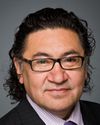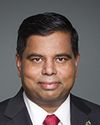I'll take a crack at that. Thank you for the question.
From my experience in listening and working with a number of communities across the country around the issue of long-term seniors care, I think it's safe to say, and a number of them have also said, that depending on the size of the communities and the location, it's not feasible to have a long-term care facility in each and every community, obviously. Where there is critical mass, it might make sense.
For example, in Ontario—and I hate to use Ontario as an example continually, but it's my experience—Wikwemikong is a large community on Manitoulin Island. Also, Six Nations obviously has a sizeable population. Oneida has a really wonderful facility, with both indigenous and non-indigenous patients, as does Akwesasne, of course. They have the critical mass to have the business case to have a facility in those communities. There might be others.
From what I'm gathering, people want to look at different options and modalities—a hub and spoke model, for example.
Think of Sioux Lookout, for example. There is a high population of northern indigenous Oji-Cree community members in and out of Sioux Lookout, or living there. At least they would have more accessibility if they had a long-term care facility, which is what they're promoting right now. The Town of Sioux Lookout, the Sioux Lookout First Nations Health Authority, and a number of the chiefs have been looking at a model that could serve northwestern Ontario.
I think it will have to be nimble and will have to be innovative in terms of different approaches for rural and remote communities. It's the issue of accessibility, however. We have many fly-in communities and not everybody can afford the air flight.





